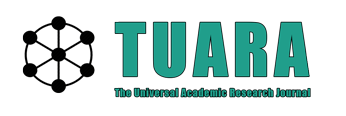Estimation of Transformed Continuous Assessment Scores of Rural and Urban Secondary Schools
Volume 4 Issue 2 ( July 2022)
Oluseyi Peter Adeoye Temitope Babatimehin Chidubem Deborah Adamu
Pages: 80-86 Download Count : 1113 View Count: 1487 DOI Number 10.55236/tuara.1062887Abstract:
This study examined the transformed continuous assessment CA scores of Osun State junior secondary schools with a view to providing information on the procedure for transforming CA scores for better comparability of scores among rural and urban secondary schools. The study adopted the ex-post-facto research design. The population for the study comprised all junior secondary school class III students who had CA scores during 2010/2011 session in both rural and urban secondary schools in Osun State. The sample consisted of 1200 students selected using multistage sampling technique. A proforma titled Continuous Assessment Scores Retrieval was used to collect CA scores of the selected students in English Language and Mathematics. Data collected were analyzed using percentages and Pearson’s Product moment correlation statistics. The results showed that the transformed CA scores of rural and urban secondary schools were above the mean score in Mathematics (62.70%) and English Language (66.0%). The result also showed that there was a significant positive relationship between the transformed CA scores and raw CA scores obtained by students in Mathematics and English Language (r=1.00; p<0.05). The results further showed that there was a significant difference in the transformed CA scores of rural and urban secondary schools in Mathematics (t=5.341; p<0.05) and English Language (t=4.395; p<0.05). Finally, it was observed that Osun State Ministry of Education did not use standardized procedures (transformation models) to transform the raw scores submitted by the schools. The study therefore concluded that transformed CA scores of rural and urban secondary schools in Osun State would be comparable if appropriate transformation models were used.
Keywords
- Continuous assessment
- transformed continuous assessment scores
- Z-score and T-score
